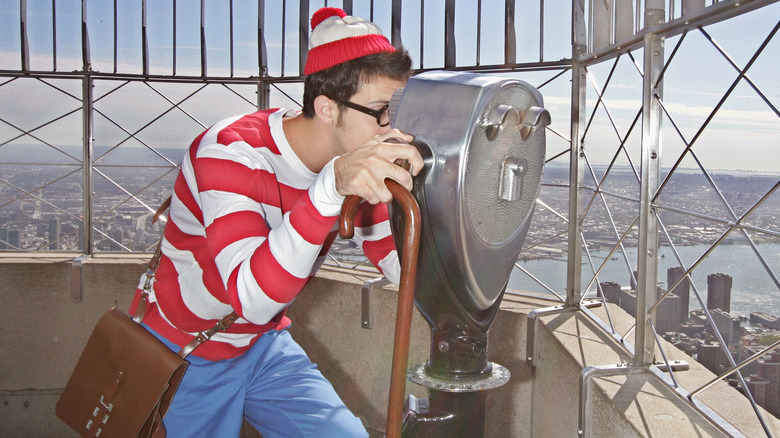This Hilarious Raspberry Pi Project Can Find Waldo In Seconds
AI, as a whole, has reached a critical point in human history. On the one hand, it's advanced enough that its great utility and potential are becoming clear to us. Conversely, it hasn't yet advanced far enough for us to know precisely where that potential may lead. AI has proven that it can hack most of our passwords very quickly; what if it has even more malevolent intentions for us in the future?
For now, though, it's probably safest to concentrate on the many convenient applications of AI. Those plug-ins, extensions, and pieces of software streamline certain aspects of our work lives, ease our navigation of the Internet, and much more. One intriguing new string to AI's bow may be the most useful yet: a robotic arm that can immediately locate Waldo in one of those iconic crowded scenes.
The There's Waldo robot, powered by Raspberry Pi, can do just that and will probably shame many of us in the process. AI is achieving astonishing things, such as smart bullets, but a Waldo-detecting robot is something few could have anticipated.
What is There's Waldo?
The objective of a lot of AI projects is to save time spent on mundane pursuits. While the venerable Where's Waldo is anything but mundane, it can be time-consuming. With this in mind, Redpepper, a strategic & creative marketing agency, modified a uArm Swift Pro in the most hilarious way. Armed with a camera powered by Raspberry Pi (coding via Python), it can pinpoint that wily Waldo wherever he may be hiding on a page. It can literally point him out, too, because it's outfitted with a little hand attachment.
How was There's Waldo taught to locate its nemesis so effectively? Through AutoML Vision. Matt Reed of Redpepper explained to The Verge, "I got all of the Waldo training images from Google Image Search; 62 distinct Waldo heads and 45 Waldo heads plus body." The thing about Waldo, of course, is that he's so distinctively different from his surroundings in his iconic bright outfit that he's easily identified once located.
The AI cross-references its knowledge of Waldo's appearance with what it "sees" in the book, analyzes for matches, and then finds Waldo. Functionally, it's closely inspecting the scene just as a human would, but Reed noted that thanks to OpenCV, the robot could very efficiently spot Waldo types that weren't included in the images it was fed. In short, it does the job better and more efficiently than previously expected, a common trend in AI.

